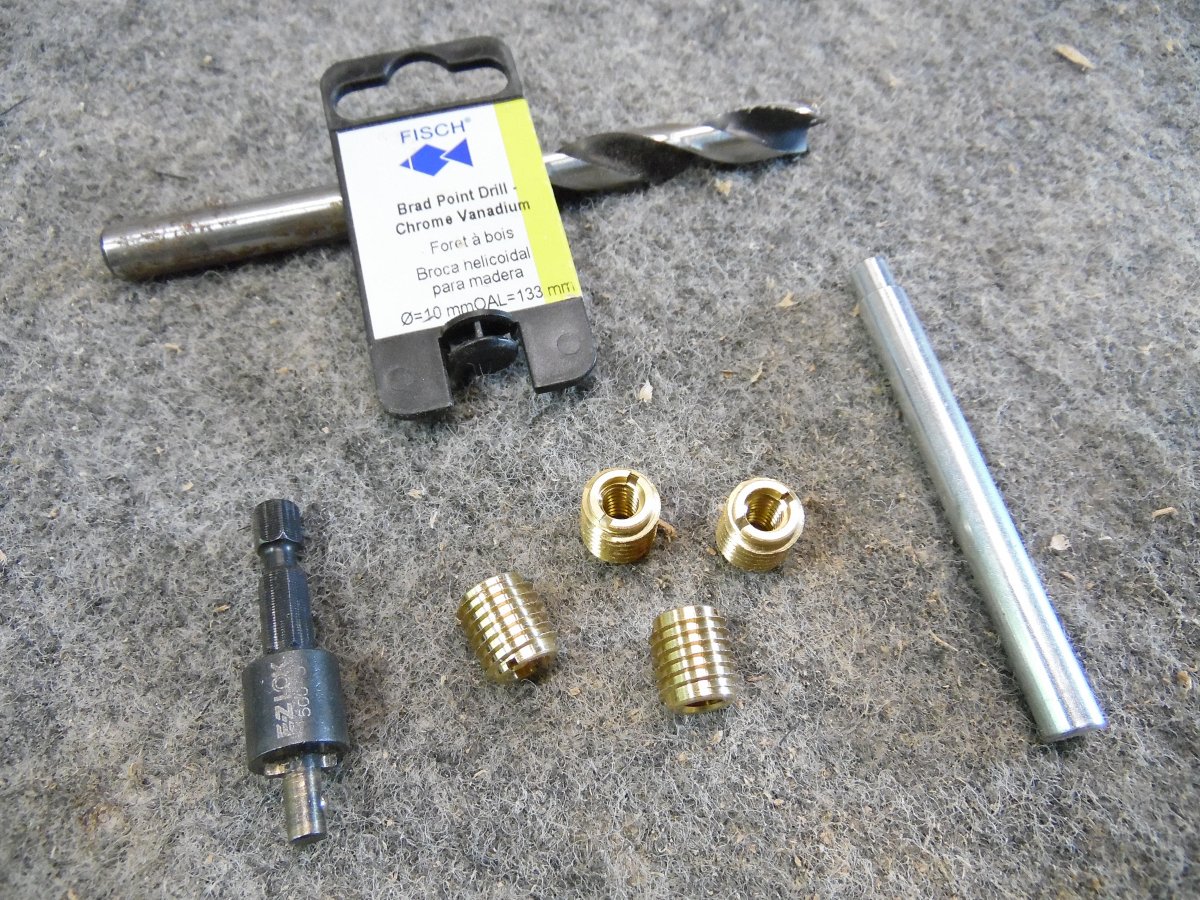Inspector
Nyuck, Nyuck, Nyuck!
I would be afraid of it splitting the plastic being that close to the edge.
Pete
Pete

True - but does the fact that it is plastic also affect the ability to helicoil?I would be afraid of it splitting the plastic being that close to the edge.
Pete
Those ones in your photo look to have a very fine thread, I found these on ebay but they look a bit coarser than your example.
You can get threaded inserts with much finer threads, and make yer own driver with some thread bar and a few nuts glued on.
Most of those brass ones are imperial, but can be made into metric with some elbowgrease.
I'd try seeking metric though, if possible.
To counter the possible splitting, one would be advised to have it in a vice or clamps like one might have seen done for half blind dovetails.
https://www.ukworkshop.co.uk/threads/half-blind-dovetail-kerfing-tool.112791/#post-1229344
That thrust guide looks good enough to dress to me,
I had a big cut through mine so welded it, which deformed the bronze bushing and made it all sloppy.
With the shaft held suitably rigged in the vice with timber jaws as not to mar it, a wee grinder will do a good job in turning it, provided you get it to loosen up freely beforehand.
Tom


Im sorry you had a problem, I ve just tried and it downloaded fine on my windows pc and I can view it in my pdf viewerThanks for your reply - I tried the link for the manual you had found but it won't let me download it for some reason.
Just tried it again and it worked this time! Yes it looks very similar to mine, it’s quite comprehensive a manual actually so it will take me some time to sift through it. Thanks for sourcing it for me.Im sorry you had a problem, I ve just tried and it downloaded fine on my windows pc and I can view it in my pdf viewer
ah Im glad it worked, it might be of some helpJust tried it again and it worked this time! Yes it looks very similar to mine, it’s quite comprehensive a manual actually so it will take me some time to sift through it. Thanks for sourcing it for me.
Thoughts on this cheaper version of a helicoil for the purpose?I would be afraid of it splitting the plastic being that close to the edge.
Pete
Okay that is great, I'll order a set of those and give that a go, that way I will only be repairing the single thread rather than doing work to all of them.The Helicoil patents ran out a long time ago so the competitor products function just as well. Best if you can clamp the part in a drill press/pillar drill to maintain an on size, perpendicular hole. Much harder to do with a handheld drill but not impossible. Should make for a good repair.
Pete

I was reading that some more, and evidently "seals" refers to tires, not retaining washers,
so I was way off the mark there,
Regarding your oiling question, I only asked about that recently,
and wasn't aware of the little plugs on the euro guides were for the same purpose.
I'd guess you wouldn't be very far off with any light mineral oil,
but would be interested in suggestions, as it's not too cheap!
Video timestamped to the seal removal and oil.
View attachment 155632
Ok thanks, I’m still a bit confused about how this will latch on to the nipple, as it will need to depress the ball bearing that sits at the tip of the nipple to work! But I’ll order one and give it a go!I use a push type oiler like this:
https://www.amazon.co.uk/Pressure-P...t=&hvlocphy=1006663&hvtargid=pla-889581468914
Just about any oil will do, they are usually sintered bronze bushes like oilite that are preloaded with oil but benefit from some oil every now and again. However, some could be just bronze which need oil regularly.
I wouldn't worry about the guides, bit of oil slapped on would likely do the trickAhh good to know, thanks for doing that research!
The one in your video seems to have plastic caps which can be removed and then the oil poured in - very simple! If you look at the ones I have in that photo earlier, mine have actual fixed nipples on which presumably require a mating fitting and then oil injected under pressure into them. I'm not sure about what it is I will need to fill these exactly and this is what i'm wondering!
Enter your email address to join: